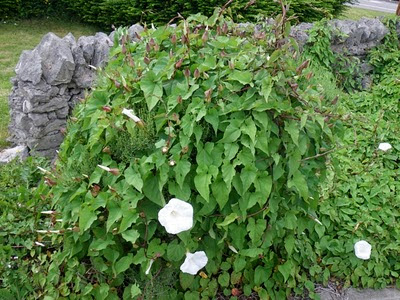Part 1
Here are some photos of my African Violets to get things started off. I will get into more technical stuff later on, i.e. AV history, origins, Latin name, etc. (I use AV as an abbreviation for African Violet)
Photo #1: AV on a humidity tray in an eastern exposure – Note: the little chef to the right... I accidentally broke him =( I felt super bad about it after the fact. Dang!!!! =(
Photo #2: AV getting watered from below, the best way to guarantee that you don't accidentally get water on the leaves, causing spotting to your plants. This spotting cannot be removed once present. The only option is to completely remove the AV leaf! Make sure you also take the stem of the leaf as well. Leaving it attached the plant without the leaf will cause the stem to die and rot away. Not good! And not very flattering to your plant, either.
Photo #3: The group on the windowsill. These plants are all larger now, since these photos are at least a year old or more (I think, but I honestly am not sure!)
Photo #4: Baby AV plants, grown from 2 single violet leaves. There are several babies in this one pot, which later needed separating. I allowed baby AV's to grow freely in this same pot since I thought it would look cool and fuller with all the leaves. Only later did I find out how hard separating them was.
Take it from me – plant only one cutting (AV pup) per pot in the early growth stage. These are most commonly grown from stem tip cuttings taken from the mother plant. (Please see below for information on stem tip cuttings.) In short, it’s much easier to care for the cutting to start off if you keep it singular . =)
Note: Later, once your AV matures and blooms, you can group it with other AV’s for an attractive shock of color and beauty to add charm to any room! 2 or 3 plants to a container will do nicely.
Photo #5: Av's in bloom. I was at Trader Joe's with Mom one summer and they had 3 AV plants in the same pot, all blooming!! Each was a different color (white, purple, and pink, if I recall). I couldn't resist buying one (or three, that is.) Since this photo was taken, the plants have been separated into individual pots.
How to Root AV Leaves (Stem tip cuttings)
1. Find a healthy AV leaf that's a nice shade of green. Using sharp, clean scissors, snip it well below the leaf, leaving plenty of the juicy stem. (You can dip the cutting in rooting hormone if you desire, but personally I haven't had to do this. If you are impatient waiting for plants to root, however, this may be your best bet!)
2. Next, using well aerated soil, fill your chosen container just about to the top, with about a half inch of room to water (if you want to water from above).
3. Make sure it's equipped with a drainage hole! Please do not compress the soil! Using a pencil, or your finger, make a hole in the soil.
4. Stick the stem tip down into the hole, leaving some stem visible above the soil surface. Lightly firm up the soil around the cutting.
5. Go easy on the watering until roots begin to form (about 3-5 weeks, or more, depending on the location, humidity etc. The 'time-to-root-formation' will vary depending on whether or not you used rooting hormone.) To test the roots, give the cutting a gentle tug, but don't mangle it or rip it out! Soon you will begin to see little AV leaves creeping up around the cut stem. Try not to get water on them!
6. Once the baby plant looks fairly large (about 2 months, maybe less depending on humidity and light conditions) cut away the original leaf from the baby plant. Pot up in whatever container you like, or leave the baby in the current pot. The choice is yours! (Photo showing the old leaf completely removed. Plant is still small, but fully mature enough to bloom.)
In general, A high humidity room will help the cutting root faster, as well as assist your AV's by giving them a growth boost--mature plants, or otherwise. As for sunlight for your AV cutting, the best location would likely be wherever your other Av's are currently residing (probably an East or West window. My best friend keeps her Violet in a Northern window, and it's constantly in bloom. The choice is really a matter of personal preference.)
Warning! A Southern exposure will cook your AV. Yikes! NOTE. **If you are not sure what window faces which direction, get an expensive compass to help you locate true North, and go from there** With a bit of patience, you will have brand new AV's ready to pot up! More photos of my AV propagation are now posted above. =)
You can 're-use' the same AV leaf to grow multiple plants if you wish. Simply re-cut the same stem after removing it from the baby AV, and repeat steps 2-6. If the leaf has rotted or is no longer green, discard it.
Be persistant and do not give up! Not every cutting is sure to become a new plant! If you meet the proper conditions (and increase humidity) you will be successful! **Soil, watering and drainage is the key. Too much water = rotting plant. Poor soil = rotting plant due to lack of drainage, fungus gnats and more. Also, Too much sun = cooked plants. Keep at it and don't doubt yourself!!
More to come in African Violets in Part 2!
















